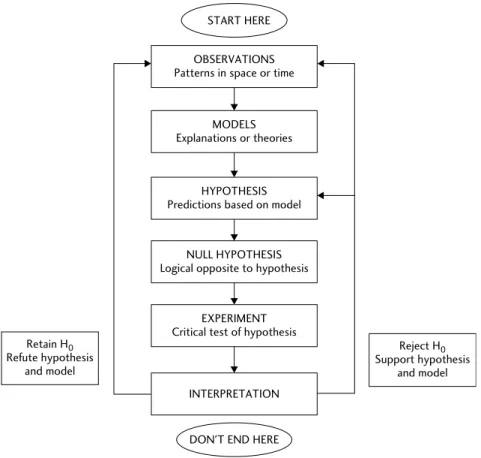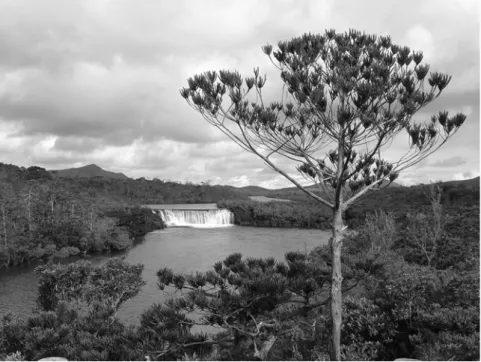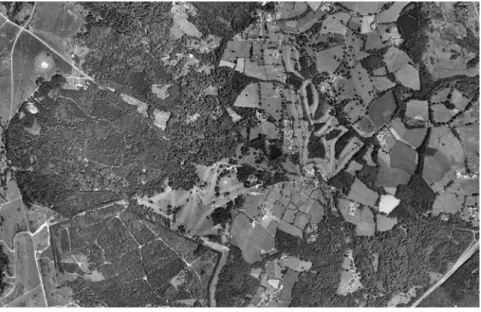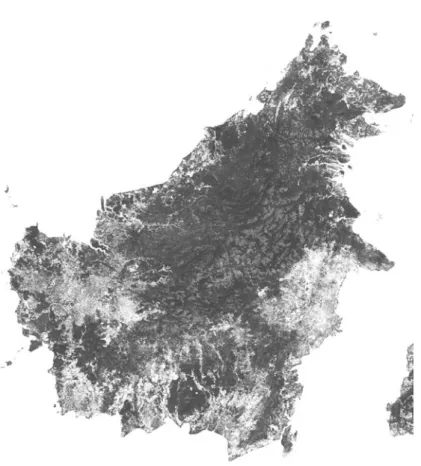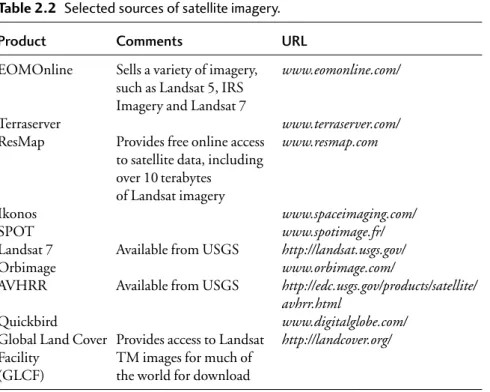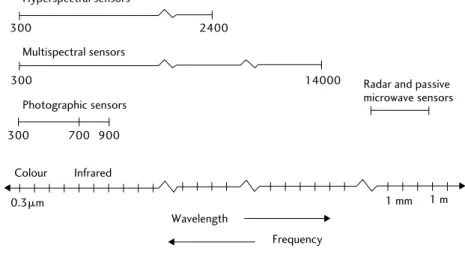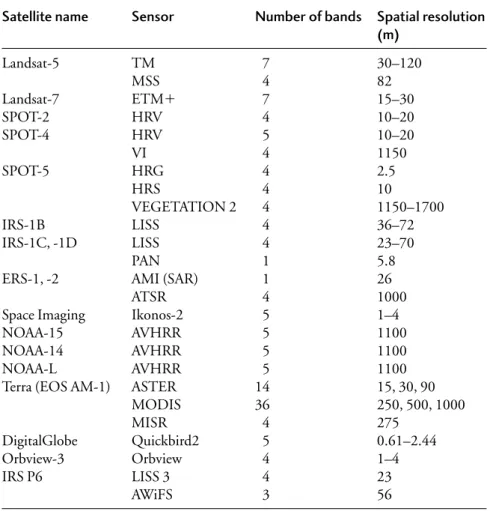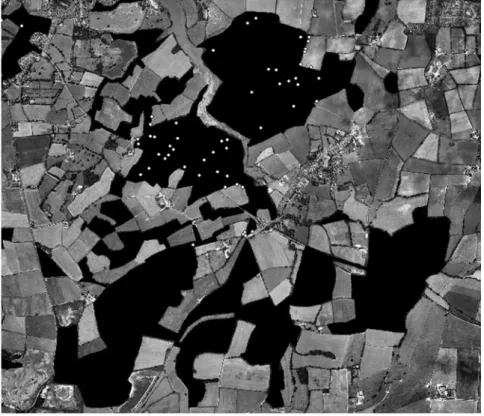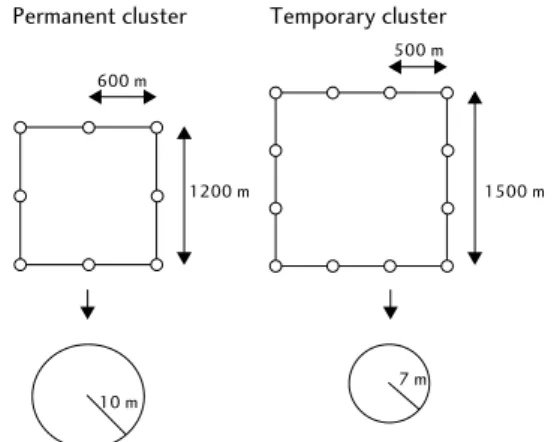Forest Ecology and Conservation
Series Editor: William J. Sutherland
Bird Ecology and Conservation: A Handbook of Techniques William J. Sutherland, Ian Newton, and Rhys E. Green
Conservation Education and Outreach Techniques Susan K. Jacobson, Mallory D. McDuff, and Martha C. Monroe Forest Ecology and Conservation
Adrian C. Newton
Forest Ecology and Conservation
A Handbook of Techniques
Adrian C. Newton
1
3
Great Clarendon Street, Oxford OX2 6DPOxford University Press is a department of the University of Oxford.
It furthers the University’s objective of excellence in research, scholarship, and education by publishing worldwide in
Oxford New York
Auckland Cape Town Dar es Salaam Hong Kong Karachi Kuala Lumpur Madrid Melbourne Mexico City Nairobi New Delhi Shanghai Taipei Toronto
With offices in
Argentina Austria Brazil Chile Czech Republic France Greece Guatemala Hungary Italy Japan Poland Portugal Singapore South Korea Switzerland Thailand Turkey Ukraine Vietnam Oxford is a registered trade mark of Oxford University Press in the UK and in certain other countries
Published in the United States by Oxford University Press Inc., New York
© Oxford University Press 2007
The moral rights of the author have been asserted Database right Oxford University Press (maker) First published 2007
All rights reserved. No part of this publication may be reproduced, stored in a retrieval system, or transmitted, in any form or by any means, without the prior permission in writing of Oxford University Press, or as expressly permitted by law, or under terms agreed with the appropriate reprographics rights organization. Enquiries concerning reproduction outside the scope of the above should be sent to the Rights Department, Oxford University Press, at the address above
You must not circulate this book in any other binding or cover and you must impose the same condition on any acquirer British Library Cataloguing in Publication Data Data available
Library of Congress Cataloging in Publication Data Data available
Typeset by Newgen Imaging Systems (P) Ltd., Chennai, India Printed in Great Britain
on acid-free paper by Biddles Ltd., King’s Lynn ISBN 978–0–19–856744–8 (Hbk) ISBN 978–0–19–856745–5 (Pbk) 10 9 8 7 6 5 4 3 2 1
To my father, Alan Newton, for all his support and encouragement over the years.
Preface
For the past 25 years, forests have been the focus of international conservation concern. High rates of deforestation and forest degradation are common in many parts of the world, but it was the rapid loss of tropical rain forests that particularly captured the attention of the world’s media from the early 1980s onwards. More recently, it has been increasingly recognized that many other ecologically impor- tant forest types, such as temperate rain forests and tropical dry forests, are also being lost at an alarming rate. In response, particularly following the United Nations Conference on Environment and Development in 1992, major interna- tional efforts have been devoted to forest protection and sustainable management.
There have been some notable successes during this time, yet still the widespread loss of forests continues.
Despite the growth in the number of forest conservation and development projects, as well as in the scientific discipline of forest ecology, practitioners are often unsure how best to tackle the problems that they face. A lack of access to information about appropriate techniques is hindering both the development of the science and its application to forest conservation. This book was written in response to this need, and is part of a series providing information on methods in ecology and conservation, focusing on different species and habitats. The target audience is ecologists involved in forest research or conservation projects, includ- ing both established professionals and those just starting out on their careers. It is hoped that the book will also be of value to practising foresters. Although foresters have traditionally been trained primarily in management of forests for timber, the profession has undergone something of a revolution in recent years. The individ- ual forest manager is now often expected to be familiar with social, economic, and ecological aspects of forests, as well as timber production. Hopefully this book will be of value to those practitioners aiming at the elusive goal of truly sustainable forest management.
Forest ecology and conservation is an enormous subject. I have therefore had to be highly selective in selecting material for this book. Inevitably, this choice has been influenced by my own interests and experience, and for this bias, I apologize.
Although it is recognized that different forest types differ substantially in their ecology and composition, the book is designed to be relevant to all kinds of forests.
This is undoubtedly an ambitious goal, but I am comforted by the fact that in my own experience I have been more struck by the similarities between different forests than by their differences, particularly regarding the conservation problems that they face. Many of the techniques described here have been applied to forests growing in very different parts of the world, although perhaps with some adapta- tion. These methods should therefore be applied flexibly, not as rigid protocols.
There is no substitute for common sense!
It is important to remember that techniques are not fossils. This is a living discipline, in every sense. This means that there is scope to improve on all of the methods described here. Refining a method, or developing a new approach, is a worthwhile focus of research in its own right. Users of this book are therefore encouraged not to consider the techniques presented as a finished article, but rather as a starting point for further experimentation and innovation. I have deliberately provided extensive references, to provide examples of these methods being used in practice, and to encourage readers to investigate their chosen techniques in greater depth. Citing these examples illustrates the fact that different workers use techniques in different ways, and in many cases the best way of doing something is an issue still open to both critical appraisal and debate.
In preparing this book, I particularly thank the many wonderful postgraduate students and research assistants with whom I have had the privilege of working, and who have grappled with many of the methods described: Theo Allnutt, Claudia Alvarez Aquino, Siddhartha Bajracharya, Sarah Bekessy, Niels Brouwers, Philip Bubb, Elena Cantarello, Cristian Echeverría, Duncan Golicher, Jamie Gordon, Carrie Hauxwell, Gus Hellier, Valerie Kapos, Tracey Konstant, Fabiola López Barrera, Rizana Mahroof, Elaine Marshall, John Mayhew, Francisco Mesén, Lera Miles, Khaled Misbuhazaman, Gill Myers, Simoneta Negrete, Theresa Nketiah, Daniel Ofori, Tanya Ogilvy, Ashley Robertson, Patrick Shiembo, Tonny Soehartono, Kerrie Wilson.
While writing the text I became increasingly aware of how much I owe the people that taught me as a student. It was surprising to discover how many of the techniques described here were introduced to me when studying at Cambridge more than 20 years ago. It is easy to take a good education for granted. I was very fortunate to be taught by some eminent plant ecologists, and I here record a debt of gratitude to all of those who so generously shared their knowledge and expertise, particularly David Briggs, David Coombe, Peter Grubb, Bill Hadfield, Donald Pigott, Oliver Rackham, Edmund Tanner, Max Walters, and Ian Woodward.
Many thanks also to everyone who responded positively to a request for photographs, and to my wife Lynn for checking the text.
Forests are magnificent places. I deeply respect those individuals who dedicate their lives to forest conservation, and I very much hope that this book will be of some value in supporting their efforts. Please let me know if the book proves to be of use, and more importantly, how it could be improved.
Adrian C. Newton School of Conservation Sciences Bournemouth University [email protected] May 2006
Contents
Abbreviations xiv
1. Introduction 1
1.1 Defining objectives 2
1.2 Adopting an investigative framework 5
1.3 Experimental design 8
1.4 Achieving scientific value 9
1.5 Achieving conservation relevance 12
1.6 Achieving policy relevance 16
1.7 Defining terminology 21
1.8 Achieving precision and accuracy 26
1.9 Linking forests with people 27
2. Forest extent and condition 32
2.1 Introduction 32
2.2 Aerial photography 33
2.2.1 Image acquisition 34
2.2.2 Image processing 36
2.2.3 Image interpretation 38
2.3 Satellite remote sensing 39
2.3.1 Image acquisition 42
2.3.2 Image processing 47
2.3.3 Image classification 49
2.4 Other sensors 54
2.5 Applying remote sensing to forest ecology and conservation 55 2.5.1 Analysing changes in forest cover 55
2.5.2 Mapping different forest types 60
2.5.3 Mapping forest structure 62
2.5.4 Mapping height, biomass, volume, and growth 63
2.5.5 Mapping threats to forests 66
2.5.6 Biodiversity and habitat mapping 66
2.6 Geographical information systems (GIS) 68
2.6.1 Selecting GIS software 71
2.6.2 Selecting data types 73
2.6.3 Selecting a map projection 74
2.6.4 Analytical methods in GIS 75
2.7 Describing landscape pattern 76
2.7.1 Choosing appropriate metrics 78
2.7.2 Estimating landscape metrics 82
3. Forest structure and composition 85
3.1 Introduction 85
3.2 Types of forest inventory 85
3.3 Choosing a sampling design 87
3.3.1 Simple random sampling 88
3.3.2 Stratified random sampling 89
3.3.3 Systematic sampling 90
3.3.4 Cluster sampling 90
3.3.5 Choosing sampling intensity 91
3.4 Locating sampling units 91
3.4.1 Using a compass and measuring distance 91
3.4.2 Using a GPS device 92
3.5 Sampling approaches 93
3.5.1 Fixed-area methods 94
3.5.2 Line intercept method 95
3.5.3 Distance-based sampling 95
3.5.4 Selecting an appropriate sampling unit 98 3.5.5 Sampling material for taxonomic determination 102
3.6 Measuring individual trees 104
3.6.1 Age 104
3.6.2 Stem diameter 107
3.6.3 Height 109
3.6.4 Canopy cover 111
3.7 Characterizing stand structure 113
3.7.1 Age and size structure 113
3.7.2 Height and vertical structure 115
3.7.3 Leaf area 116
3.7.4 Stand volume 118
3.7.5 Stand density 120
3.8 Spatial structure of tree populations 121
3.9 Species richness and diversity 125
3.9.1 Species richness 125
3.9.2 Species diversity 131
3.9.3 Beta diversity and similarity 133
3.10 Analysis of floristic composition 135
3.10.1 Cluster analysis 136
3.10.2 TWINSPAN 138
3.10.3 Ordination 139
3.10.4 Importance values 142
3.11 Assessing the presence of threatened or endangered species 142
3.12 Vegetation classification 144
4. Understanding forest dynamics 147
4.1 Introduction 147
4.2 Characterizing forest disturbance regimes 148
4.2.1 Wind 149
4.2.2 Fire 151
4.2.3 Herbivory 153
4.2.4 Harvesting 159
4.3 Analysis of forest disturbance history 161
4.4 Characterizing forest gaps 164
4.5 Measuring light environments 167
4.5.1 Light sensors 167
4.5.2 Hemispherical photography 170
4.5.3 Light-sensitive paper 174
4.5.4 Measuring canopy closure 174
4.6 Measuring other aspects of microclimate 178 4.7 Assessing the dynamics of tree populations 181
4.7.1 Permanent sample plots 181
4.7.2 Assessing natural regeneration 182
4.7.3 Measuring height and stem diameter growth 184 4.7.4 Measuring survival and mortality 185
4.7.5 Plant growth analysis 189
4.7.6 Factors influencing tree growth and survival 191
4.8 Seed bank studies 195
4.9 Defining functional groups of species 198
5. Modelling forest dynamics 203
5.1 Introduction 203
5.2 Modelling population dynamics 204
5.2.1 The equation of population flux 204
5.2.2 Life tables 205
5.2.3 Transition matrix models 205
5.3 Population viability analysis 213
5.4 Growth and yield models 220
5.5 Ecological models 221
5.5.1 Gap models 222
5.5.2 Transition models 226
5.5.3 Other modelling approaches 228
5.5.4 Using models in practice 230
6. Reproductive ecology and genetic variation 235
6.1 Introduction 235
6.2 Pollination ecology 235
6.2.1 Tagging or marking flowers 236
6.2.2 Pollen viability 236
Contents | xi
6.2.3 Pollen dispersal 237
6.2.4 Mating system 239
6.2.5 Hand pollination 243
6.2.6 Pollinator foraging behaviour and visitation rates 244
6.3 Flowering and fruiting phenology 245
6.4 Seed ecology 250
6.4.1 Seed production 250
6.4.2 Seed dispersal and predation 252
6.5 Assessment of genetic variation 262
6.5.1 Molecular markers 262
6.5.2 Quantitative variation 279
7. Forest as habitat 285
7.1 Introduction 285
7.2 Coarse woody debris 285
7.2.1 Assessing the volume of a single log or snag 286 7.2.2 Survey methods for forest stands 287 7.2.3 Assessing decay class and wood density 294
7.2.4 Estimating decay rate 296
7.3 Vertical stand structure 297
7.4 Forest fragmentation 300
7.5 Edge characteristics and effects 302
7.6 Habitat trees 307
7.7 Understorey vegetation 312
7.8 Habitat models 316
7.8.1 Conceptual models based on expert opinion 317 7.8.2 Geographic envelopes and spaces 320
7.8.3 Climatic envelopes 321
7.8.4 Multivariate association methods 321
7.8.5 Regression analysis 322
7.8.6 Tree-based methods 323
7.8.7 Machine learning methods 323
7.8.8 Choosing and using a modelling method 324
7.9 Assessing forest biodiversity 326
8. Towards effective forest conservation 332
8.1 Introduction 332
8.2 Approaches to forest conservation 333
8.2.1 Protected areas 334
8.2.2 Sustainable forest management 338
8.2.3 Sustainable use of tree species 344
8.2.4 Forest restoration 347
8.3 Adaptive management 354
8.4 Assessing threats and vulnerability 357
8.5 Monitoring 363
8.6 Indicators 367
8.6.1 Indicator frameworks 368
8.6.2 Selection and implementation of indicators 369
8.7 Scenarios 374
8.8 Evidence-based conservation 377
8.9 Postscript: making a difference 377
References 379
Index of Authors and Names 431
Subject Index 437
Contents | xiii
Abbreviations
AAC allowable annual cut
ACE abundance-based coverage estimator
AFLP amplified fragment length polymorphisms
ANOVA analysis of variance
ATBI all taxa biodiversity inventory
ATFS American Tree Farm System
AVHRR advanced very high resolution radiometer
C&I criteria and indicators
CBD Convention on Biological Diversity
CCA canonical correspondence analysis
CI cover index
CIFOR Centre for International Forestry Research
CSA Canadian Standards Association
CWD coarse woody debris
dbh diameter at breast height
DCA or DECORANA detrended correspondence analysis
DEI depth of edge influence
DEMs digital elevation models
DIFN diffuse non-interceptance
DN digital number
DPSIR drivers, pressure, state, impact, and response
DSS decision support system
ENFA ecological niche-factor analysis
ESUs evolutionarily significant units
FAO Food and Agriculture Organization of the United
Nations
FCR fluorochromatic reaction
FCS favourable conservation status
FHD foliage height diversity
FLDM forest landscape dynamics model
FLEG forest law enforcement and governance
FLR forest landscape restoration
FMU forest management unit
FPA formalin/propionic acid/alcohol
FRIS Forest Restoration Information Service
FSC Forest Stewardship Council
GAM generalized additive model
GCP ground control point
GFRA Global Forest Resources Assessment
GIS geographical information system
GLCF Global Land Cover Facility
GLM generalized linear model
GPS global positioning system
GRMU gene resource management unit
HBLC height to base of live crown
HCVF high conservation value forest
HPS horizontal point sampling
HSI habitat suitability index
IALE International Association for Landscape Ecology
ICE incidence-based coverage estimator
IFF International Forum on Forests
IPF Intergovernmental Panel on Forests
ISI self-incompatibility index
ITTO International Tropical Timber Organization
IUCN World Conservation Union
IUFRO International Union of Forest Research Organizations
kNN knearest neighbour
LAI leaf area index
LAR leaf area ratio
LMR leaf mass ratio
MBR Maya Biosphere Reserve
MU management unit
MWP modified-Whittaker plot
NDVI normalized difference vegetative index
NFI national forest inventory
NGOs non-governmental environmental organizations
NTFP non-timber forest product
OECD Organisation for Economic Co-operation and
Development
OTU operational taxonomic unit
PAR photosynthetically active radiation
PCA principal components analysis
PCO principal coordinates analysis
PEFC Programme for the Endorsement of Forest
Certification
PIT passive integrated transponder
PPFD photosynthetic photon flux density
PRA participatory rural appraisal
PRC population recruitment curve
PSP permanent sample plot
PSR pressure–state–response
PVA population viability analysis
Abbreviations | xv
QTL quantitative trait loci
RAP rapid assessment programme
RAPD random amplified polymorphic DNA
RAPPAM rapid assessment and prioritization of protected areas management
RFLP restriction fragment length polymorphism
RGR relative growth rate
RGRH relative growth rate of height
ROC receiver–operator characteristic
RPVA relative population viability assessment
RRA rapid rural appraisal
RTU recognizable taxonomic unit
SFI sustainable forestry initiative
SFM sustainable forest management
SI suitability index
SLA specific leaf area
SLA sustainable livelihoods approach
SSR microsatellite
UNCED United Nations Conference on Environment and
Development
UNEP United Nations Environment Programme
UNFCCC United Nations Framework Convention on Climate Change
UNFF United Nations Forum on Forests
UTM Universal Transverse Mercator (projection)
WCPA World Commission on Protected Areas
WDPA World Database of Protected Areas
WSSD World Summit on Sustainable Development
WWF World Wide Fund for Nature
1
Introduction
This book describes techniques that may be used in ecological research, survey or monitoring work in support of forest conservation and management. Yet con- servation is much more than simply a research endeavour. Rather, conservation management depends on understanding the interplay between social, economic, and political issues relating to a particular forest, and on appreciating the values held by different people with an interest in it. In practice, the scientific understanding of the ecology of a forest often plays a relatively minor role in determining how it is conserved or managed. In many cases, management decisions are based on political or economic expediency rather than the results of the latest ecological research. Yet even though ecological understanding alone never conserved a forest, such an understanding can play a crucial role in ensuring that conservation management is effective. The aim of this introductory chapter is to help achieve this objective, by placing the application of ecological techniques in a broader context.
The science of forest ecology has progressed enormously over the past two decades, assisted by rapid technological developments in areas such as remote sensing, GIS, and molecular ecology. Such techniques have transformed our under- standing of forest distribution and ecological condition, and have afforded pro- found insights into how forests respond to environmental change at a variety of scales. Yet our understanding of forest ecology has its roots far deeper, having grown out of more than two centuries of forestry practice. While some of the methods described here are still evolving rapidly, others have proved themselves over many years of practical application. Ecological researchers often have much to learn from forestry professionals with respect to methods of forest mensuration and inventory, and any technique that has stood the test of time is worthy of consideration. New technology is no guarantee of improved measurements.
Deciding which technique is appropriate for use in a particular situation depends critically on the objectives of the research or survey work to be under- taken. Defining these objectives clearly at the outset is of paramount importance to any research or conservation programme. The objectives of a research ecologist may differ substantially, however, from those of a conservation practitioner or a forest manager. Many forest conservation projects are designed to help implement some policy objective, whether this be a policy statement developed by the organization responsible for developing the project, or some national or inter- national policy goal. Even in the case of relatively ‘pure’ ecological research, funding organizations are increasingly inclined to direct their support towards research that
is policy-relevant. This chapter includes a brief overview of recent developments in international forest policy, as this provides a basis for so much of the current research focus on forests, together with definitions of some of the key concepts involved. A summary is also provided of recent initiatives aiming to provide conservation assessments of forests; these provide a valuable basis for much current and future research.
Other issues that should be considered in the early stages of planning research or survey work include the choice of an appropriate investigative framework and experimental design, how to ensure high scientific value and rigour, and how to place the work in an appropriate socio-economic context. This chapter provides some guidance on these issues, together with some reflections on how ecological research can be linked effectively with the practice of forest conservation and management. A significant divide currently exists between conservation research and practice, and this is an issue of widespread concern. How this divide can be bridged is considered in greater depth in the final chapter of this book.
1.1 Defining objectives
Investigators embarking on their first piece of research or survey work often make a major mistake: they fail to adequately define what it is that they are hoping to achieve. The need to set precise objectives may seem self-evident, or even trivial, but it is not. A failure to define aims with sufficient precision inevitably leads to poorly focused research, the lack of a clear result, and potentially a great deal of wasted effort. As noted by Underwood (1997), if there are no clear goals, there will be no useful results. Before investing time and resources in collecting data of any kind, and before choosing appropriate methods for data collection, it is important to ensure that the reasons for collecting the information are as clearly defined as possible.
Anyone who has attempted to teach ecological research to undergraduate students will be well aware of what can go wrong. Students new to research are often overly ambitious in their aims, giving little chance of generating a clear answer. An important early lesson is that it is not difficult to collect large amounts of data, but that this is no guarantee of a successful outcome. Some students seem to have a compulsion to measure as much as possible, then struggle to extract a clear message from the clouds of numbers that have been generated, a process that can be deeply disheartening. This problem can be pre-empted by paying greater attention to developing clear, precise objectives at the outset.
Such problems are not unique to novices. Even experienced researchers frequently make mistakes. It is not unusual for major research programmes, costing vast amounts of public money, to provide few genuine insights at the end of the day.
Often, when a research programme is complete, some key piece of information will prove to be lacking. Hindsight truly is a wonderful thing. But without the benefit of hindsight, or experience, how can appropriate objectives be identified to minimize the risk of failure?
Choosing an appropriate question to ask can be a daunting process. The range of possible objectives, even for a relatively simple forest system, is potentially infinite.
An important first step is to define the kind of study that is being attempted. It is useful to differentiate between ecological research, survey, and monitoring (some- times the word surveillance is also used for the latter):
● Researchis generally undertaken to answer a specific question, or to test a hypothesis.
● A survey is typically a descriptive piece of work, which might be more open-ended in nature than a research project, and might not have such a clear outcome.
● Monitoringis a form of survey that is designed to be repeated over time, enabling trends in some variable of interest to be determined.
Many of the techniques described in this book are equally relevant to each of these different approaches. However, the nature of the study will have implications for how the methods are implemented, and above all for the design of the data collection process.
The international scientific community tends to place greater emphasis on research rather than survey and monitoring work, and this is reflected in the content of scientific journals. According to Peters (1991), because of its lack of relationship to relevant theory, survey work does not qualify as science, but might be better referred to as natural history. Yet the importance of natural history should not be underestimated. Much of our current ecological theory was developed on the basis of painstaking field observations made by generations of naturalists.
Furthermore, survey and monitoring methods are of fundamental importance to the practice of conservation, providing information of value to priority setting and management. There is great merit in simply observing how species behave in their natural habitats, and such observations can contribute directly to defining appro- priate management interventions (Marren 2002). It is striking how little is known about even our most important forest-dwelling ‘flagship’ species. As an example, it is salutary to note that we do not know precisely how many individuals remain of any of the great ape species, nor what their precise habitat requirements are (Caldecott and Miles 2005).
There are situations where some form of survey will be preferred to a research programme. In forest areas for which no prior information is available, a descriptive survey is the logical first step, perhaps with the simple aim of describing forest composition and structure. A survey might be undertaken to assess the conservation status or condition of a particular forest or associated species, or to determine the occurrence of some potential threat. Many conservation organizations are currently investing heavily in survey work of this nature, with the aim of identifying priorities for conservation. An initial survey can provide a basis for developing more tightly defined questions relating to ecological processes or functions, which could be addressed by subsequent research. Yet even in the case of a preliminary, descriptive survey, clear objectives should be defined at the outset.
Defining objectives | 3
A brief checklist is provided here to help guide the definition of objectives for a research, survey or monitoring programme:
● Is it original?Has the information already been collected by somebody else? This can be most readily determined by conducting a review of relevant literature, for example by using an appropriate search engine (such as 具www.google.com典) or citation database (such as the ISI Web of Science, 具www.thomsonisi.com典).
However, most information relating to forests has never been formally published, but resides in internal reports, data archives, newsletters and other so-called ‘grey’ literature. Accessing such information can present an enormous challenge. There may be no substitute for personally contacting relevant insti- tutions and individuals to ascertain what work has been carried out previously, and to find out what happened to the results. Although tracking down such information can take a great deal of time and effort, the rewards may be signifi- cant. There is a fine tradition of meticulous survey work among many forestry institutions, which can still be a source of valuable information.
● Is it tractable?In other words, is it possible to deliver an answer to the question set, given available time and resources? If not, then the objectives need to be more tightly focused, for example by limiting the spatial or temporal scope of the project more narrowly. It is important to remember that some ecological questions are impossible to answer.
● Is it interesting?Interest can be increased by choosing an issue that is topical or novel. For example, has there been recent media interest in the chosen subject?
Might the results of the research generate media interest? Many new researchers are unaware of the extent to which different scientific themes go in and out of fashion, yet an awareness of current trends can be of great importance in successfully publishing results or securing funding for further research.
● Can the objectives be phrased as a question?Presenting the objectives in this way can be a great help in focusing the design of the research, and in obtaining a clear answer from the results. It can be helpful to define a set of sub-questions under a general aim, to help break the problem down into more manageable, clearly defined units.
● Is it of practical value?Although this criterion may not be of paramount impor- tance to a ‘pure’ researcher, much ecological information is collected with a specific end use in mind. To ensure that appropriate data are collected in a suit- able form, the objectives should be developed in consultation with the intended users of the information, such as conservation practitioners or forest managers.
Time spent refining objectives is never wasted. Remember that not everything that can be measured, should be (Krebs 1999). In practice, this means considering alternatives, attempting to rephrase and refine the wording, always with the goal of increasing precision (see Box 1.1 for an example). Consult textbooks (for example Begon et al. 1996) or monographs (for example Hubbell 2001) to identify theories worth testing. Seek advice from your peers, colleagues, and supervisors before embarking on the project. Observe and analyse how the objectives are described in
published scientific papers. Avoid questions such as ‘why’ and ‘how come’, and focus instead on developing questions that begin with ‘how much’, ‘how many’,
‘when’ and ‘where’ (Peters 1991). Critically consider the possible answers to the objectives that you have set.
Adopting an investigative framework | 5
Box 1.1 Defining research objectives
Research should be both tractable and interesting. In order to ensure that research is manageable, objectives should be tightly focused, for example by limiting their temporal and spatial scope. In the example below, this has been achieved by explicitly stating the area of forest to be considered, avoiding broad statements about forests in general that would be impossible to evaluate in a field survey. To ensure that the research is interesting, it should be topical, something that can be ascertained by reference to the international media, as well as to recent issues of scientific journals. In this example, whereas measuring forest biomass was an active area of research during the boom in systems ecology in the 1960s, today estimation of carbon sequestration is arguably a much more topical issue—even if the basic techniques have not changed.
Not interesting Interesting
Not tractable Do forests have high Do forests sequester a lot of
biomass? carbon?
Tractable What is the above-ground How much carbon does this biomass of this 0.01 ha forest 0.01 ha of forest sequester in
plot? a year?
Many researchers set great store by the need to state hypotheses clearly at the outset. Referees of manuscripts submitted to international scientific journals often expect to see the objectives of a piece of research stated in this form. Yet not every- one agrees with this approach. The role of hypothesis testing continues to be the subject of intense philosophical debate regarding how science should be done. This is a debate in which anyone embarking on a research project can usefully engage, perhaps involving some lively discussion with colleagues. This book cannot pre- tend to be a philosophical treatise, but researchers should be aware that opinions vary regarding how science should be carried out. It is worth noting, however, that statistical tests are explicitly designed to test hypotheses, and if there is an intention to employ such tests in the analysis of the results, then the hypotheses to be tested in this way should be made explicit at the outset.
1.2 Adopting an investigative framework
Regardless of what the precise objectives actually are, any piece of research or survey work should be carefully planned and implemented according to an appropriate investigative framework. Adopting a clear logical procedure is important for
communicating the results to others, and to ensure that the information collected achieves the objectives set.
A framework is presented here based on that described by Underwood (1997) (Figure 1.1). Versions of this procedure are widely practised in ecological investigations. The framework comprises a series of logical steps, beginning with observations that are typically made in the field. Such observations can vary in spatial or temporal scale, and might be purely casual observations made during a visit to a particular forest, or the results of systematic survey work undertaken over a prolonged period. Usually some feature or pattern of potential interest will be detected, which might be worthy of further study. For example, it might be noticed that a particular species of tree appears only to occur in certain areas, perhaps along river banks or at particular altitudes.
The next step is to attempt to explain the phenomenon observed. Forest stands might be dominated by large, old trees, with little evidence of recent recruitment.
OBSERVATIONS Patterns in space or time
MODELS Explanations or theories
HYPOTHESIS Predictions based on model
NULL HYPOTHESIS Logical opposite to hypothesis
EXPERIMENT Critical test of hypothesis
INTERPRETATION START HERE
Retain H0 Refute hypothesis
and model
Reject H0 Support hypothesis
and model
DON'T END HERE
Fig. 1.1 Generalized scheme of logical components of a research programme. Ho represents the null hypothesis. (From Underwood (1997). Experiments in Ecology: their logical design and interpretation using analysis of variance.
Cambridge University Press.)
Why might this be? There might be several alternative explanations to an observation such as this: for example, failure of seed production or dispersal, destruction of juvenile trees as a result of fire or the activities of herbivores, or the lack of appro- priate environmental conditions for seedling establishment. Typically there will be many possible explanations for the observations made, and research will be required to differentiate between them.
When undertaking any form of ecological investigation, it is helpful to differ- entiate between pattern and process. Patternsorphenomenaare those things that we observe. Many ecological patterns are subtle and are difficult to detect, perhaps because they occur at a temporal or spatial scale that is difficult for us to perceive.
Others might be more obvious but more difficult to explain. Such patterns are caused by ecological processes. Alex Watt, one of the founding fathers of forest ecology, was the first to explicitly separate pattern from process in considering the dynamics of vegetation in relation to its structure. His work on regeneration cycles in beech woodland in southern England laid the foundations of our current under- standing of gap dynamics in forests, which has become such a powerful research paradigm in forest ecology. His classic paper (Watt 1947) is still worth consulting today, despite the fact that it is based purely on observation. A focus on ecological processes is a central feature of much modern ecological research.
Having detected and described an ecological pattern, how can we identify the many different processesthat might have been responsible for its formation? How can we determine which of the many potential explanations for the pattern is correct?
The formation of different logical hypotheses can help differentiate among explan- ations (Underwood 1997). A hypothesiscan be defined as a prediction based on some explanation of the observations made. Once a hypothesis has been formulated, it can potentially be tested (Figure 1.1). This process of predicting an outcome by deducing what is logically consistent with a hypothesis, followed by its testing against obser- vations made, is known as the hypothetico-deductivescientific method.
Often, objectives of research are expressed as a null hypothesis, which is the opposite of a hypothesis. This reflects the fact that it is easier to disprove something than to prove it (Underwood 1997). For example, it might be hypothesized that the abundance of an Acaciaspecies is low in a particular area of savannah because it is preferentially browsed by giraffes. This would be difficult to prove, because there could always be some situation—another savannah, perhaps—that would provide an exception. So as an alternative, this could be expressed as a null hypothesis: the incidence of giraffe browsing has noeffect on the abundance of the Acaciaspecies. The null hypothesis could then be tested (or falsified), for example by experimentally alter- ing the incidence of giraffe browsing and observing its effects on Acaciaabundance.
An experiment is the only way of adequately testing a hypothesis. If the outcome of an experiment is to reject the null hypothesis, then the explanation or theory that it was designed to test is supported. If the experiment fails to falsify the null hypothesis, then the hypothesis is shown to be wrong, as its predictions were not correct. What happens next? If the explanation was supported, then it could be tested again—through an additional experiment—to see whether it applies to Adopting an investigative framework | 7
other situations, and if so, could then be considered as a general theory. If the hypothesis was not correct, then it needs to be revised in the light of the experi- mental results. There may be a need to collect additional observations. In either case, the process is a cyclic one (see Figure 1.1), and as Underwood (1997) points out, research can therefore be seen as a never-ending process—which might be comforting in terms of ensuring long-term job security!
Are there alternatives to this investigative framework? There is no doubt that it has its flaws, and is not supported by all ecological researchers. As an illustration, it can sometimes be difficult to determine whether or not the hypothesis should be retained or rejected, as a result of type I or type II errors (Underwood 1990).
An alternative way of approaching research is offered by the use of Bayesian methods. Bayesian inference involves the representation of beliefs or information in the form of probabilities. The knowledge or beliefs available before research is undertaken are represented as a likelihood distribution, known as the ‘prior’. This can then be revised in the light of new information generated by research, through a process of statistical inference using Bayes’ theorem. The revised probability distribution is known as the ‘posterior’ (Dennis 1996). The use of Bayesian methods in ecology was greatly stimulated by a series of papers published in the journal Ecological Applications in 1996. As noted by Dennis (1996), the application of Bayesian approaches in ecology is controversial, as it implies abandoning the scientific method based on testing hypotheses and the investigative framework described above. Protagonists of the Bayesian approach suggest that it makes better use of available data, allows stronger conclusions to be drawn from uncertain data, and is more relevant to environmental decision-making (Ellison 1996).
The application of Bayesian methods to conservation management is examined by Wade (2000), who highlights the value of presenting information in a form that decision-makers can readily understand, in a way that incorporates uncertainty directly into the analysis. Ghazoul and McAllister (2003) reached similar con- clusions when considering the application of Bayesian methods to forest research.
Whether or not Bayesian methods of analysis are adopted, it is helpful to make underlying models, paradigms, world views, and beliefs explicit, so that it is possible to determine their influences on what and how measurements were taken (Underwood 1997).
1.3 Experimental design
Any ecological technique must be applied according to an appropriate experimental or sampling design if the information generated is to be useful. A comprehensive treatment of the principles of experimental design is beyond the scope of this book.
There are now a number of texts that provide a valuable introduction to the principles of designing surveys and experiments. I particularly recommend those by Ford (2000), Krebs (1999), Peters (1991), Southwood and Henderson (2000), and Underwood (1997). Dytham (2003) provides a highly practical guide to the principles of sampling and statistical analysis.
The design of the research or survey will depend on the objectives set, and the characteristics of the forest to be studied. Some general principles to remember are listed below:
● Randomize. Randomization is essential in order to avoid sample bias, and to ensure that samples are representative. Most statistical tests assume that samples are independent and free from bias, and this can most readily be achieved by sampling randomly. Stratified random sampling approaches are commonly adopted in forest ecology, where random samples are taken within a forest area divided into relatively homogeneous subareas classified on the basis of some environmental variable or forest composition. The number of samples taken should be proportional to the size of each subarea (Southwood and Henderson 2000). Remember that random samples should be truly random: use a random number generator provided by a pocket calculator or appropriate computer software (many statistical or spreadsheet packages have this feature).
● Replicate. Replication is essential in order to determine patterns of variation, so that the results obtained can be attributed to the experimental treatments or factors of interest. Replicate samples should be taken within each area of study, and should be genuinely independent, to avoid the risk of pseudoreplication (Hurlbert 1984).
● Use appropriate controls. Many experimental investigations fail because of inadequate selection of controls, which are characterized by the absence of the experimental factor or treatment of interest. By providing a basis for comparison, controls are of fundamental importance to effective experimentation. Many surveys and monitoring approaches fail to collect baseline information before the experimental treatments (or management interventions) are applied, and fail to include untreated controls. Only by including such controls can any effects detected be attributed to directly to the treatment of interest.
● Perform a power analysis before starting the main investigation. Before investing time and effort in intensive data collection, it is recommended that a pilot study be undertaken to test the methods and protocols. The data obtained during such a pilot study can then be used to perform a power analysis, which will enable estimates to be made of the number of samples required to detect effects of a given magnitude. Statistical power is influenced by the sample size, the variability of the population being sampled, and the magnitude of the effect of the experimental treatment or factor. Methods of power analysis are presented by Krebs (1999) (see also Chapter 8); software programs that per- from such analyses are reviewed by Thomas and Krebs (1997).
1.4 Achieving scientific value
Once the objectives of a research or survey project have been defined, an investigative framework adopted, and an appropriate design put in place, then success in terms of delivering some valuable results might seem assured. However, failure to deliver results of genuine scientific value is more common than many researchers might care to Experimental design | 9
admit. Most researchers have at least one file drawer full of results that have failed to see the light of day in terms of a scientific publication. Entire doctoral theses, repre- senting years of honest endeavour, have been consigned to this form of oblivion. How can this failure be avoided, and results of real scientific value be achieved?
This raises the question of what constitutes scientific value. Although scientific performance is often assessed in terms of the number and quality of publications produced, this may be a poor measure of its real value. Most scientific papers are cited rarely, some not at all. Few have real impact in terms of influencing forest conservation policy or practice. But the problems may go deeper than how the results are disseminated: to the nature of ecological science itself.
Peters (1991) provides a comprehensive critique of the science of ecology and how it is currently practised. In many ways, this is an extraordinary book, and it is recommended reading for anyone interested in engaging in any form of ecological research. He concludes that:
The weakness of the central constructs of contemporary ecology results because ecology com- pounds its single failings. Operational impossibilities spawn tautological discussions that replace predictive theories with historical explanations, testable hypotheses with the infinite research of mechanistic analysis, and clear goals for prediction with vague models of reality. The resulting mélange obscures appropriate research and attainable goals with sloppy, ineffective activity. As a result, the central constructs in ecology yield predictions with difficulty and these are often so qualitative, imprecise and specific that they are of little interest and less utility (Peters 1991).
Peters’ book does not make comfortable reading for most ecologists. There is hardly a single area of ecological method that escapes some degree of censure.
Needless to say, the conclusions are controversial, but at the very least the points raised are worthy of serious consideration and debate. But what are the practical implications of this critique? Some of these are summarized briefly below, but the reader is encouraged to consult the original text for a comprehensive consideration of these and many other issues.
● Pluralism. A single approach or technique will not be successful in all systems;
rather, different approaches may be needed for different systems and different questions. This applies as much to the methods used in building theory as to those used to test it. Multiple working hypotheses should be encouraged.
● Practicality. Many ecological theories, it is argued, have little relevance to the real world. They are often based on abstract mathematical representations of phenomena rather than on empirical measurements. Researchers should focus on making practical observations, and on addressing little questions that can be answered rather than big questions that cannot. Theory should always be relevant, and inspired by pressing problems about nature rather than the search for scholasticism. Seek the simplest way of making testable predictions.
● Sound variables. Much ecological research suffers from use of concepts that are difficult or even impossible to measure. Even concepts as widely used as ‘niche’,
‘ecosystem’, and ‘habitat’ have been defined variously by different authors and are difficult to operationalize in practice. Variables should be simple, measurable,
and operationally defined, such as diversity, nitrogen concentration, biomass, population density, etc. Poorly defined variables should be avoided.
● Empiricism. Theories must be supported by data, or directly based on data. Patterns in these data should be identifiable by using simple statistical manipulations, such as regression. Focus on prediction rather than explan- ation. All predictive models are probabilistic; uncertainty should always be estimated or represented in such models.
Above all, Peters (1991) emphasizes the importance of testing predictions made on the basis of relevant theory, as an essential ingredient of high-quality ecological science. Investigators embarking on a new programme of research should therefore seek to identify relevant theory at the outset, and on the basis of such theory, develop hypotheses incorporating specific predictions that can readily be tested.
Peters (1991) also notes that ecological research often encourages the construction of irrelevant theories and the collection of irrelevant data by proposing and testing underlying mechanisms that might contribute to an observed pattern, although they are neither necessary nor sufficient for that pattern. Theories that are scientifically relevant are those that can help resolve questions posed by the scien- tific community. Scientifically relevant data are those that can test the predictions from such theories (Peters 1991).
How can relevant theory be identified? Ecological science is not short of theor- etical ideas, and a search of relevant textbooks or journal papers will soon unearth a variety of candidates. Selection of an appropriate theory will depend upon the characteristics of the problem that has been identified. Many problems relating to forest dynamics, for example, can be addressed by using theories relating to successional processes. In the conservation biology literature, island biogeography theory and metapopulation theory never seem to be very far away. New ideas are always worth seeking out and critically examining.
Problems relating to forest ecology have fortunately attracted the interest of some outstanding researchers, who have produced some highly original and stimulating works. To cite just two examples: the recent book by Stephen Hubbell, although it has implications far beyond the boundaries of forest ecology, was inspired by detailed analysis of community composition in tropical forests. His synthesis of island biogeography theory and theories of relative abundance is, in my view, the most important contribution to ecological science in the past three decades, and an outstanding intellectual achievement (Hubbell 2001). Read it and see whether you agree with me. Whether right or wrong, there are enough ideas in this book to keep generations of postgraduate students busy for decades. With respect to the forests of northern Europe, Vera (2000) has produced a remarkable book that seeks to overturn traditional views of forest succession, by critically examining almost a century’s worth of accumulated empirical evidence. This book provides a salutary reminder that no theory in ecology is so well established that it could not be overturned by some appropriate research. As an aside, Vera has managed what many researchers aspire to but few achieve: a radical reappraisal of conservation practice, among practitioners themselves.
Achieving scientific value | 11
1.5 Achieving conservation relevance
Although scientific journals are bursting with research results that often appear to have important implications for forest conservation, most research seems to have little impact on how conservation is actually practised. This can be a source of great frustration to those who have worked so hard to obtain the results concerned. What is going wrong? Is it because practitioners do not read scientific papers? Or has the wrong research been done? Or does the problem go deeper—do practitioners fully understand the implications of research? Do researchers fully appreciate the problems faced by practitioners?
This divide between conservation research and practice is currently the focus of much concern, particularly among researchers. At the same time, policy-makers are increasingly requiring that management action be based on an ‘evidence-based’
approach—in other words, on the best scientific information available. How can this be achieved? The techniques that can be used to strengthen the links between conser- vation research and practice are described in Chapter 8. Here, I focus on more general issues that should be considered when planning any research or survey programme.
If research is to be relevant to conservation practice, then there is no substitute for effective communication between researchers and practitioners. A researcher may have a theory of how forests respond to environmental change, and be keen to test it. The practitioner’s priorities may be very different: perhaps there is uncertainty about the potential impacts of a proposed management intervention, or how a forest is being affected by some newly emerging threat. Only a process of dialogue between both parties will ensure that the practitioner’s needs are properly met by the proposed research. This dialogue can be great fun and enormously educational for both parties, if based on mutual respect.
Many conservation organizations appear to spend most of their time organizing workshops. Forest managers often feel as if they are spending more time attending meetings, discussing how things ought to be done, rather than getting out and doing it. There is now great emphasis on engaging in a process of ‘stakeholder consultation’ before implementing any conservation action. This reflects the growing recognition that for conservation to be effective, those people that have an interest or stake in the outcome need to be involved in the decision-making process from the outset. Ecological research or survey work often seems to play little role in this consultation process, and the idea of attending interminable meetings can be very off-putting to many researchers (as well as some practitioners). Discussions around a table can seem very remote from real-life conservation action. Yet, engagement in this process is often essential if research is to play its proper role in influencing conservation outcomes.
If you are a researcher who wants to make a difference, it is worth learning about how conservation decisions are made. Often the technical issues surrounding how a particular forest should be managed are relatively easy to solve. Yet the transla- tion of research results into conservation practice can be a long and arduous process.
It should be remembered that conservation is a highly political endeavour. It can be viewed as a struggle for competing values. Sometimes it even erupts into conflict.
One of the most striking trends in conservation over the past three decades has been the growth in size and influence of non-governmental environmental organ- izations (often referred to as NGOs). Collectively, these organizations have played a hugely significant role in placing forest conservation on the international agenda.
Each NGO has its own particular objectives and mode of operation. Some, such as Greenpeace, focus exclusively on campaigning and direct action. Others, such as the World Wide Fund for Nature (WWF), actively develop and implement conserva- tion projects on the ground. Some environmental NGOs are now large, influential organizations that work in partnership with government agencies and (sometimes controversially) the private sector in their conservation projects. Some NGOs, notably Conservation International and WWF, have invested heavily in developing their own research and assessment programmes, to provide a scientific basis to their campaigning and priority setting (Figure 1.2).
Achieving conservation relevance | 13
Fig. 1.2 The ultimate conservation priority? The island of New Caledonia is widely recognized as being of outstanding conservation importance, particularly because of the high diversity and endemicity of its flora. The island is home to many evolutionary primitive species as a result of being a remnant of Gondwanaland that has been isolated for a very long time. It is both a ‘priority ecoregion’ and a ‘biodiversity hotspot’, as defined by WWF and Conservation International respectively. The site pictured is the Chute de la Madelaine on the Plaine des Lacs, an exceptionally important site for endemic and extremely rare tree species, with six different conifer genera occurring within an area of about 10 ha. Two conifer species, Dacrydium guillauminiiand Retrophyllum minor, are known only from this area. Although protected, the site is suffering from increasing visitor pressure. (Photo by Adrian Newton.)
|Introduction Table 1.1 Some of the major assessments and campaigns relating to forests currently being undertaken by leading non-governmental
conservation organizations.
Organization Assessment or Comments URL
campaign
Conservation Biodiversity Hotspots are areas characterized by high www.conservation.org/xp/CIWEB/home International (CI) hotspots endemism and high rates of habitat loss. To www.biodiversityhotspots.org/xp/Hotspots
qualify as a hotspot, a region must contain at least 1500 species of vascular plant as endemics, and have lost at least 70% of its original habitat. A global assessment of biodiversity hotspots is available
(Mittermeier et al. 2004). CI are also active in conserving high-biodiversity wilderness areas, many of which are forested
Fauna and Flora International/ Global Tree A collaborative programme involving www.globaltrees.org/
UNEP World Conservation Campaign campaigning and conservation action
Monitoring Centre focusing on threatened tree species in
different parts of the world
Greenpeace Ancient A conservation campaign focusing on www.greenpeace.org/international/
Forests ‘the world’s remaining forests which campaigns/forests have been shaped largely by natural
Achieving conservation relevance|15 events and which are little impacted by
human activities’ (Greenpeace International 2002)
IUCN Red List The most comprehensive assessments of the /www.redlist.org/
world’s threatened species, undertaken and regularly updated by IUCN through its Species Survival Commission (SSC)
World Resources Institute / Frontier An assessment of the world’s ‘remaining large http://forests.wri.org/
Global Forest Watch forests intact natural forest ecosystems’ (Bryant et al. www.globalforestwatch.org/
1997), equivalent to the Ancient Forests english/index.htm featuring in the Greenpeace campaign
WWF Ecoregions An ecoregion is a large area of land or www.worldwildlife.org/
water that contains a geographically distinct assemblage of natural communities. WWF has identified 825 terrestrial ecoregions worldwide, and is targeting some 200 of them for conservation action (Olson and
Dinerstein 1998, Olson et al. 2000, 2001).
Thorough assessments are being undertaken of the biodiversity of these areas
NGOs can be powerful allies in disseminating research results and putting them into practice. Many have close links with the media and produce their own pub- licity material or technical publications. An awareness of their current priorities and activities is therefore useful. Conservation campaigns can also provide a con- text or justification for research. However, researchers should never forget their own capacity to set the agenda. Novel information about some conservation issue or problem might well be seized upon and become a focus of campaigning and eventual conservation action. The biodiversity hotspot concept developed by Norman Myers (Myers 1988, 1990, 2003), for example, has become the central focus of campaigning and action by Conservation International (Myers et al.
2000).
In recent years, some international NGOs have devoted substantial resources to undertaking biodiversity assessments, with a view to defining conservation priorities at the global scale. A summary of some of the key initiatives is presented in Table 1.1, together with some of the main campaigns relating to forests implemented by international NGOs. The ecoregion assessments produced by WWF provide a particularly informative account of the ecological characteristics of different forest areas, and the conservation issues affecting them, providing a very valuable source of reference (Burgess et al. 2005, Dinerstein et al. 1995, Ricketts et al. 1999, Wikramanayake et al. 2002). A valuable overview of current assessments and the conservation approaches of leading NGOs is provided by Redford et al. (2003).
Although such assessments can provide useful context for research, they are not beyond criticism. In an important paper, Mace et al. (2000) point out the high degree of duplication between the conservation assessments that have recently been completed, and highlight the need for greater collaboration between conser- vation organizations. Whitten et al. (2001) go further and question the value of the conservation assessments that are currently being undertaken, as well as the relevance of scientific research to conservation practice.
Researchers should therefore be aware of the social, political, and institutional environment within which conservation action takes place. Recognize that all organizations have their own agenda and approach and, even if they appear to be working to a common goal of conservation, may have very different priorities or means of achieving it. It is important to keep abreast of developments and emerging issues, as illustrated by NGO campaigns. Consult websites, publications, and other media; attend conferences and meetings focusing on conservation practice as well as research. Remember that your research results may be of interest to a large community of conservation activists as well as practitioners, but be prepared to promote your findings if you believe them to be important. Conservation is not just a struggle about values, but a battle for ideas. And for resources.
1.6 Achieving policy relevance
Forest policy is something of a mystery to many researchers. They may dimly be aware of its presence, yet consider it of little relevance to their work. Cynics
perceive international policy development fora as endless talking shops, which achieve little in terms of practical conservation action. The process by which policies are developed at national and subnational scales can similarly appear opaque and somehow divorced from the situation in the field. Yet, in reality, policy decisions and agreements made at a high level underpin many research and man- agement actions, and have a major bearing on the availability of research funding to address specific problems. Does policy matter? Even if a research project is not designed to be policy-relevant, its results may be used in that way. It therefore pays to be aware of what is happening in the policy arena.
This is not the place for a comprehensive account of forest policy. The issue is covered in detail by other texts such as Mayers and Bass (2004) and Sample and Cheng (2004). Rather, the aim here is to encourage researchers to be aware of
